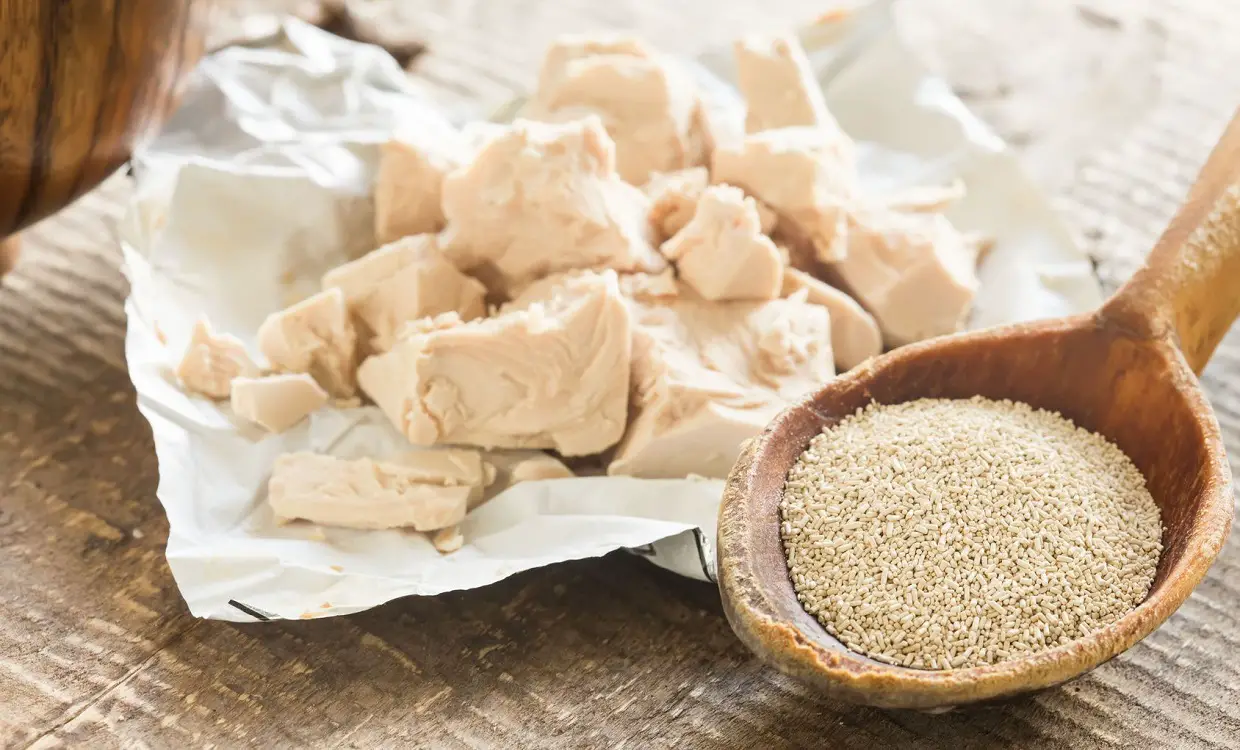SHTFPreparedness may collect a share of sales or other compensation from the links on this page.
In the field of baking and brewing, yeast are real wizards. They turn simple ingredients into fluffy bread, airy baked goods, and bubbly drinks.
But as with any magical ingredient, the question arises: how long does yeast last?
Yeast, a living microorganism, has remarkable properties contributing to fermentation. However, its vitality is not eternal. We will dive into their world to determine how long yeast lasts.
Usually, manufacturers indicate the expiration date on the package. But you should know you can use yeast even after expiration. You just need to know what factors affect their spoilage.
The shelf life of yeast is affected by various factors. These are the type, storage conditions, and whether you opened it. By understanding these variables, you can extend the life of your yeast. In doing so, you can ensure their effectiveness for future culinary creations.
Join us. We’ll uncover the secrets of yeast shelf life. This guide will help you make the most of yeast. You will be able to enjoy their captivating abilities. Prepare to embark on a journey that will leave you illuminated and satisfied with yeast!
Has the Yeast Gone Bad? How to Understand?

Yeast is a microscopic fermentation wizard. They have incredible power to make our baked goods and beer more delicious.
But what happens when you use expired yeast? How can we tell if the yeast has gone bad?
The first clue lies in their appearance. Fresh yeast is usually soft and crumbly, creamy or ivory in color. It is a sign of spoilage if it begins to turn grayish or has dark spots.
Similarly, active dry yeast should retain its granular shape. Quick-dissolving yeast looks fine and powdery. Any lumps, discoloration, or unusual texture may indicate spoilage.
Next, we turn to smell. Healthy yeast emits a pleasant, slightly sweet aroma reminiscent of bread dough. If the yeast gives off an unpleasant or sour smell, it’s time to say goodbye to it.
Finally, the most accurate test of yeast is its potency. In a small bowl, dissolve a teaspoon of yeast in warm water with a pinch of sugar.
After 5-10 minutes, if the mixture fails to produce frothy bubbles, it’s a sure sign that the yeast is past its prime.
Observe these signals. This way, you can unlock the secrets of expired yeast. Then you can ensure that your culinary creations will be with fresh produce.
What Are the Risk of Consuming Expired Yeast

Yeast is an important ingredient in baking and brewing. But consuming expired yeast can pose some dangers.
Here are potential issues that can arise from consuming yeast beyond its prime:
- Ineffective Leavening – Expired yeast can lose its strength. It will result in insufficient fermentation and poor dough rise. It can lead to dense and flat baked goods and a deterioration in texture and flavor.
- Spoiled Taste – Over time, yeast can develop off-flavors and odors due to the breakdown of its components. Using expired yeast can impart an unpleasant and rancid taste.
- Digestive Upset – Expired yeast may contain increased amounts of harmful bacteria or toxins. Consuming such contaminated yeast can cause digestive discomfort. For example, you may get bloating, gas, or even symptoms of food poisoning.
- Allergies or Sensitivities to Yeast – Some people may have allergies or sensitivities to yeast. Consumption of expired yeast can cause adverse reactions, including skin rashes and itching.
- Decreased Nutritional Value – The nutritional value of yeast can deteriorate over time. It leads to a decrease in vitamins, minerals, and beneficial compounds. Consumption of expired yeast can lead to a decrease in its nutritional value.
To ensure optimal safety, it is best to monitor the shelf life of yeast. Properly store and follow expiration dates. It will help you avoid these potential risks and ensure the magic of yeast in your recipes.
Unlocking Long-Term Yeast Storage

So, you already know how long yeast lasts. Now let’s break down How to store yeast properly. Here are the best options for storing yeast:
- Refrigeration – You can store yeast in the refrigerator to extend its shelf life. Place unopened yeast packages or tightly sealed containers in the refrigerator’s main compartment. Cool temperatures help to slow down yeast activity. It keeps them viable for several months.
- Freezing – Freezing is an excellent method of storing yeast for a long time. Transfer unopened yeast packages to airtight containers to protect them from moisture. Place the yeast in a freezer that maintains a stable temperature. Frozen yeast can extend the shelf life of yeast up to a year or more.
- Vacuum sealing – Vacuum sealing is an effective way to protect yeast from air and moisture. Use a vacuum sealer or specialized vacuum bags. This way, you can remove air and create an airtight environment for the yeast.
- Glass jars – Transfer the yeast to clean, dry glass jars with airtight lids. It will help keep it fresh. Store the jars in a cool, dark pantry or closet away from heat and sunlight.
Don’t forget to label and date the yeast jars. This way you can keep track of expired yeast. Also, do not expose the yeast to moisture or direct sunlight. This can degrade their quality.
By using these storage methods, you will be able to extend the life of the yeast. You will be able to use their magic power when your culinary creations require it.
Best Yeast for Long Term Storage

Are we talking about the long-term storage of yeast? Then your choice of the right type of yeast can make a big difference in their expiration. Here are the best yeast options for long-term viability:
- Active dry yeast – Active dry yeast is a popular choice for long-term viability. They have a relatively low moisture content and are designed to work in dry conditions. You can find them in individual bags or jars. Properly sealed and stored in a cool place, active dry yeast can retain its potency for up to a year or more.
- Instant yeast – You may know it as fast-growing or fast-acting yeast. It’s a great choice for long-term storage. They are finer and have a higher moisture content than the previous option. Their advantage is that they do not require proofing before use. It makes them convenient for baking. You can store them in the refrigerator or freezer to stay fresh for a year or longer.
- Vacuum-sealed yeast – Look for vacuum-sealed yeast packages available in some specialty stores or online. These packages provide an extra layer of protection, so you don’t use expired yeast. Vacuum-packed yeast can retain its properties for a long time. It makes them a reliable option for long-term storage.
Regardless of the type of yeast you choose, it is very important to follow the storage rules. This way, you can maximize their lifespan. Always check the manufacturer’s recommendations for specific storage instructions.
Choose the right type of yeast and use the best storage methods. This way, you can ensure a reliable supply of yeast for your culinary endeavors.
Final Thoughts
Yeast is a fascinating ingredient that underlies fluffy bread and delicious beers. They deserve the closest attention and care.
You can apply the right preservation techniques by understanding how long yeast lasts.
Remember that freshness is the key to achieving culinary excellence. So bravely embark on your yeast adventures, enjoying the rise and fall and letting the delightful aroma of fresh baked goods fill the air.
May your yeast always be fresh and your creations delicious. Happy baking and brewing!
References:
















